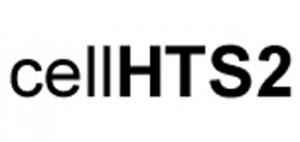Status:
Platform:
Implement Technique:
Species:
RNA interference (RNAi) screening is a powerful technology for functional characterization of biological pathways. Interpretation of RNAi screens requires computational and statistical analysis techniques. We describe a method that integrates all steps to generate a scored phenotype list from raw data. It is implemented in an open-source Bioconductor/R package, cellHTS (http://www.dkfz.de/signaling/cellHTS). The method is useful for the analysis and documentation of individual RNAi screens. Moreover, it is a prerequisite for the integration of multiple experiments.[1]
The analysis of high-throughput screening data sets is an expanding field in bioinformatics. High-throughput screens by RNAi generate large primary data sets which need to be analyzed and annotated to identify relevant phenotypic hits. Large-scale RNAi screens are frequently used to identify novel factors that influence a broad range of cellular processes, including signaling pathway activity, cell proliferation, and host cell infection. Here, we present a web-based application utility for the end-to-end analysis of large cell-based screening experiments by cellHTS2.
The software guides the user through the configuration steps that are required for the analysis of single or multi-channel experiments. The web-application provides options for various standardization and normalization methods, annotation of data sets and a comprehensive HTML report of the screening data analysis, including a ranked hit list. Sessions can be saved and restored for later re-analysis. The web frontend for the cellHTS2 R/Bioconductor package interacts with it through an R-server implementation that enables highly parallel analysis of screening data sets. web cellHTS2 further provides a file import and configuration module for common file formats.
The implemented web-application facilitates the analysis of high-throughput data sets and provides a user-friendly interface. web cellHTS2 is accessible online at http://web-cellHTS2.dkfz.de. A standalone version as a virtual appliance and source code for platforms supporting Java 1.5.0 can be downloaded from the web cellHTS2 page. web cellHTS2 is freely distributed under GPL.[2]









